
Open Cell: a bio-village in Shepherd’s Bush
Hear more at our Biohackspace talk at Green Lab, 7pm June 26th or MAIL: tom@cell-free.tech WEB: opencell.webflow.io
Open Cell is a new collaborative space for biodesign and science in Shepherd’s Bush London. We support the London ecosystem of designers and scientists incorporating biological techniques into material development. The space is composed of modular mixed use areas including labs, studios and workshops across 45 shipping containers adjacent to Shepherd’s Bush Market. Become a resident or get involved!
My co-founder Helene and I ran a biodesign exhibition with the Royal College of Art in White City, a year ago. The ideas that emerged were incredible but there was no space for them to develop. Not only did teams need space but also access to lab equipment. We had exactly the same problem since we run a startup specialising in DNA prototyping tools called Cell-Free Technology.
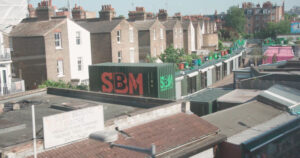
45 shipping containers from above.. Exciting and terrifying!
We spent a year searching for spaces, writing proposals, receiving rejections and having negotiations. It was demoralising at times but in the end we convinced U+i group, a property developer specialising in regeneration, SynbiCITE the UK’s synthetic biology industry and engineering biology industrial accelerator, and the London Borough of Hammersmith and Fulham Council to support the initiative. After pulling the idea into reality in early April we felt elated but terrified..
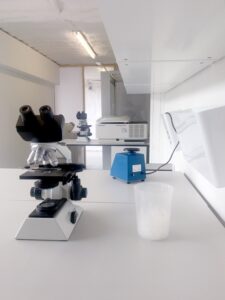
The transformation was fast!
We were excited to get the space established but since we were just a team of two we saw the mountain of work ahead. A friend, Dominic Falco, introduced us to Biotop, an Austrian science collective and architecture studio. We only began talking only in April but within a month the entire Biotop team flew to London to begin building labs in shipping containers! We installed fume cupboard, BSL cabinet, CO2 incubator, sink, autoclave, thermocycler, microscopes, centrifuges, -80 freezer and Biotop created a modular high pressure laminate (HPL) bench.

Multifunctional lab bench designed by biotop
Extending the study of the Frankfurt Kitchen, the Biotop team are seeking to experiment with, and optimise, biotech lab design. The goal is a user-centric design to facilitate most efficient space usage with the lowest cost. Containers are the ideal starting point since they are readily available, easily moved and have a long history of multifunctional use. In addition, it provides a flexible testbed in which innovative lab designs can be rapidly installed and tested. New companies are designing new manufacturing techniques and this space acts as a sandbox. (Pic3: Multifunctional lab bench designed by Biotop Link to picture)
The members of the Biotop team have diverse backgrounds, including biology, chemistry and architecture. This leads them to question everything and take a very unique approach to design. Ralf Bleim, an architect in Biotop describes the way he engages with bottom up design: “Maybe the biggest challenge is to put all the people on the same table for hours and discuss with the scientists why they put things from there to there or a tube from there to there, because sometimes it seems like just a shelf… Build a shelf, and it should look fine. But to them it is not a shelf, it is more.”
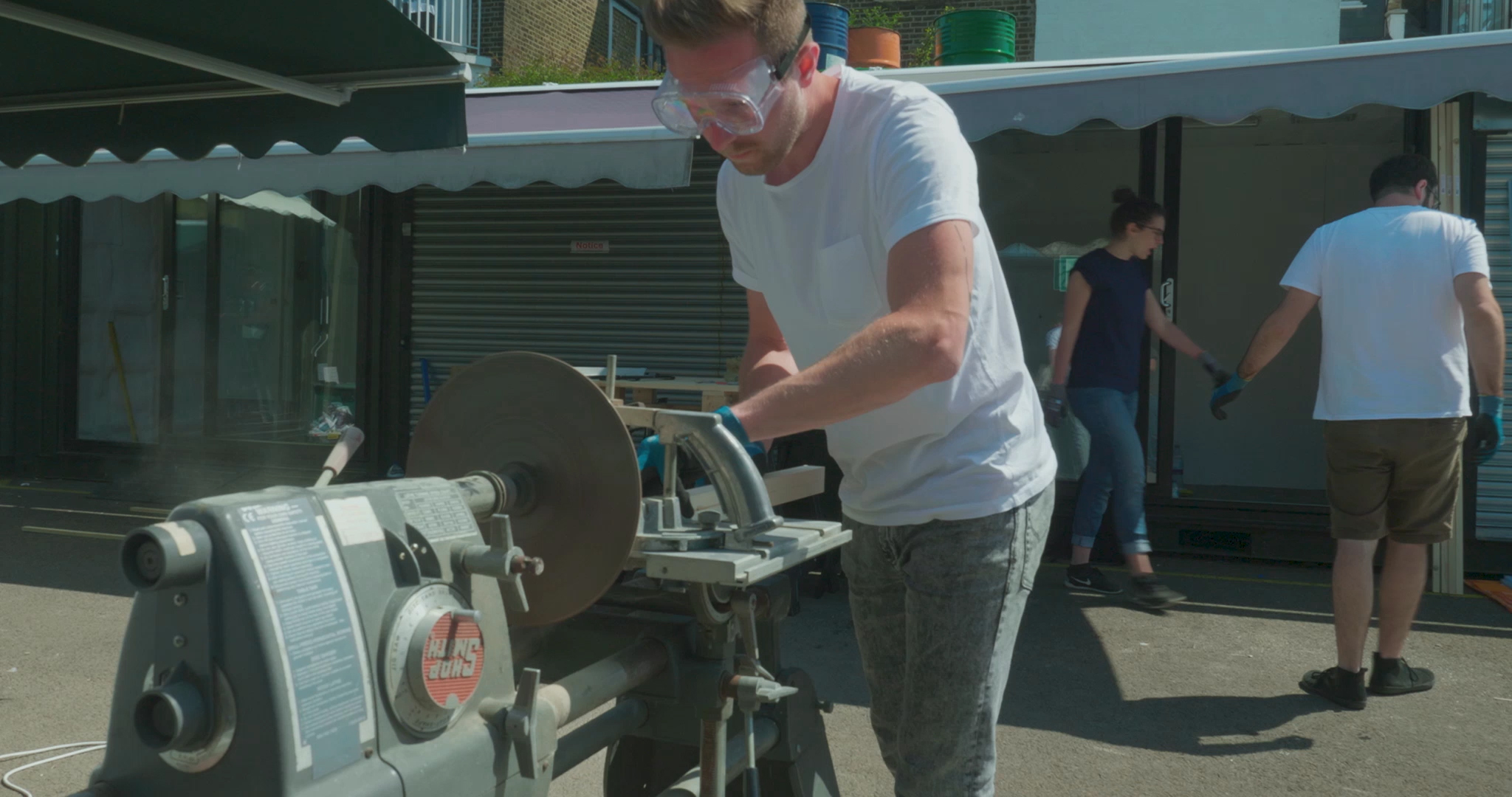
Biotop’s team of Anna Ritscher, Lukas Hutter, Anna Koeferle and Ralf Bliem hard at work cutting high pressure laminate (HPL).

Louis Alderson-Bythell (founder Olombria) and Alice Potts are RCA fashion grads and Biodesign Challenge alumni.
In a way it makes perfect sense since the startups and designers who will base themselves in Open Cell are working in a very unusual discipline. They are bridging the fields of technology, biology and design. One example is designer Alice Potts who has been working with food waste to find way to upcycle it into fashion. This type of approach is central to the style of businesses that Open Cell hopes to support; ecologically sustainable manufacturing methods and circular product life-cycles along with data-driven research are essential ingredients in designing new materials.
We held an early viewing at the end of May but now the doors are open to the public and all are welcome to participate. We want the next phase to include a community material research lab and biomakespace. We are reaching out to anyone interested in taking residence or getting involved! The team will host a venue for the upcoming London design Festival (September) and will also play host to homegrown events like the London Biotech Week that will be held later in the year. Part of the mission is to increase understanding of the impact of biotechnology and invite debate and discussion around its use. We are open and all are welcome.
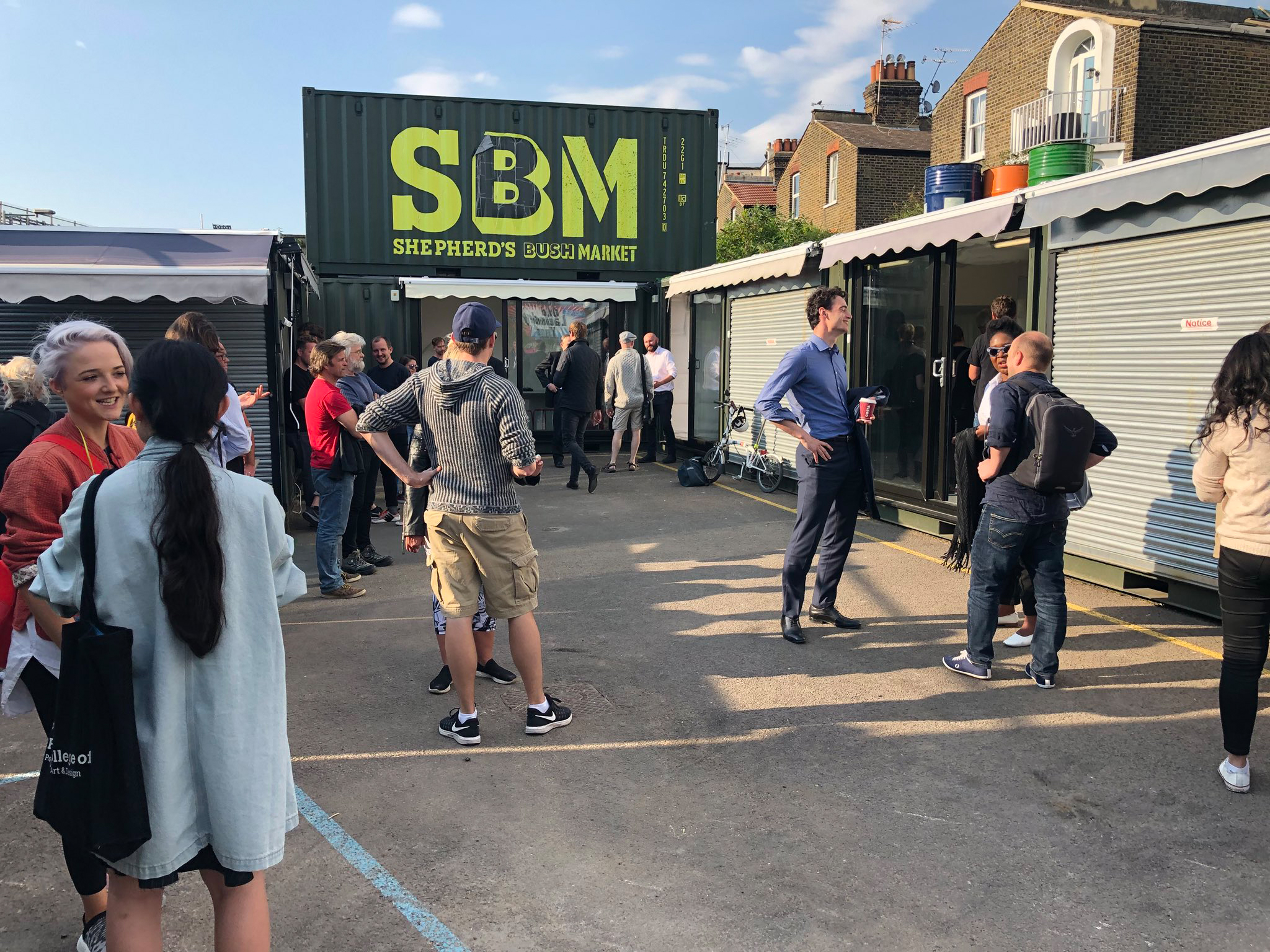

Before……………………………………………………… and…………………………………………………After!
Thomas Meany is the co-founder and CEO of Cell-Free Technology, a biotechnology company that enables high speed DNA circuit prototyping. Prior to this he held an interdisciplinary fellowship in the University of Cambridge Plant Science Department studying applications of technology in synthetic biology. He holds a PhD in physics and prior to working in biotechnology he developed semiconductor circuits in the quantum information group at Toshiba’s Cambridge Research Labs.

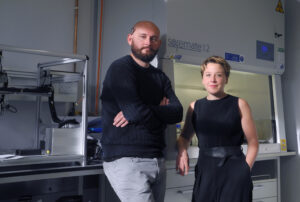




Hi,
The area that you working, studying, innovating on is a brand new for myself, but lack of knowledge about bio-design cannot detain me to be curious and ambitious to do projects. What humanity did so far, has worked very well on harming the planet earth. Therefore, I have so many questions for our future:
How can we bring AI and technology of nature?
Most of the technologies are designed to isolate human How can we adapt ourselves to live with other species?
Will we create an economic system that can include nature and other species?
My personal aim is renovating a design career and improve my knowledge on these questions. However, discovering the answers by an individual is very arduous, so I request your help to develope new ideas for future of all species in this beautiful planet.
Kind regards,
Kutay Kizilkaya
Goldsmiths University of London,
Studio of Innovation and Services
I saw what you are doing on Click. <3 <3 <3
Is there anyone in the maker space interested in making a simple prototype of a new design for a rodent trap?